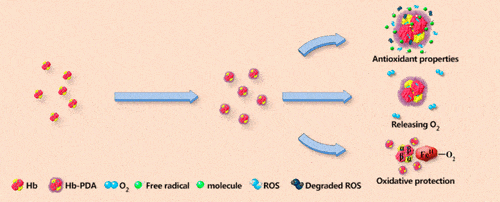Researchers have succeeded in developing a promising substitute for natural blood using the biological component that carries the oxygen, the hemoglobin compound.

[Translation by Dr. Nachmani Moshe]
Blood transfusions can save the lives of patients who have lost a significant amount of blood, but hospitals do not always have the sufficient amount or the appropriate type of blood. In order to solve these problems, researchers succeeded in developing a promising substitute for natural blood using the biological component that carries the oxygen, the hemoglobin compound. In laboratory studies, the researchers found that the new hemoglobin was able to effectively carry the oxygen molecules essential to life and, in addition, to capture free radicals known to be harmful to body tissues.
The research findings have long been published in the scientific journal Biomacromolecules.
Red blood cells are the most common component of blood transfusions, according to the US National Heart, Lung, and Blood Institute. These cells carry the protein hemoglobin, the component that performs the essential function of transferring oxygen to the body's tissues. Scientists tried over the years to develop a chemical substitute for hemoglobin - which in itself is a toxic substance - as a substitute for blood, but they discovered that in its place the substance methemoglobin was formed, a compound of oxygen and hemoglobin that is formed in the blood under the influence of certain drugs. This form of the protein is not able to bind oxygen to it, and therefore it actually reduces the amount of oxygen that the blood can carry to the tissues of the body. In addition, the production of methaemoglobin also leads to the production of hydrogen peroxide which is a substance that causes cell damage. The researchers tried to see if wrapping the hemoglobin in a suitable shell could solve these problems.
The researchers developed a one-step method to wrap hemoglobin in polydopamine polymer (PDA), a polymer that has been extensively studied for biomedical applications. Many laboratory experiments have shown that the hemoglobin wrapped in a polymer was able to efficiently transfer oxygen molecules while avoiding the production of the byproducts meta-hemoglobin and hydrogen peroxide. In addition, the wrapped material caused minimal damage to the cells and functioned as an effective antioxidant and scavenger of free radicals and active oxygen species.
